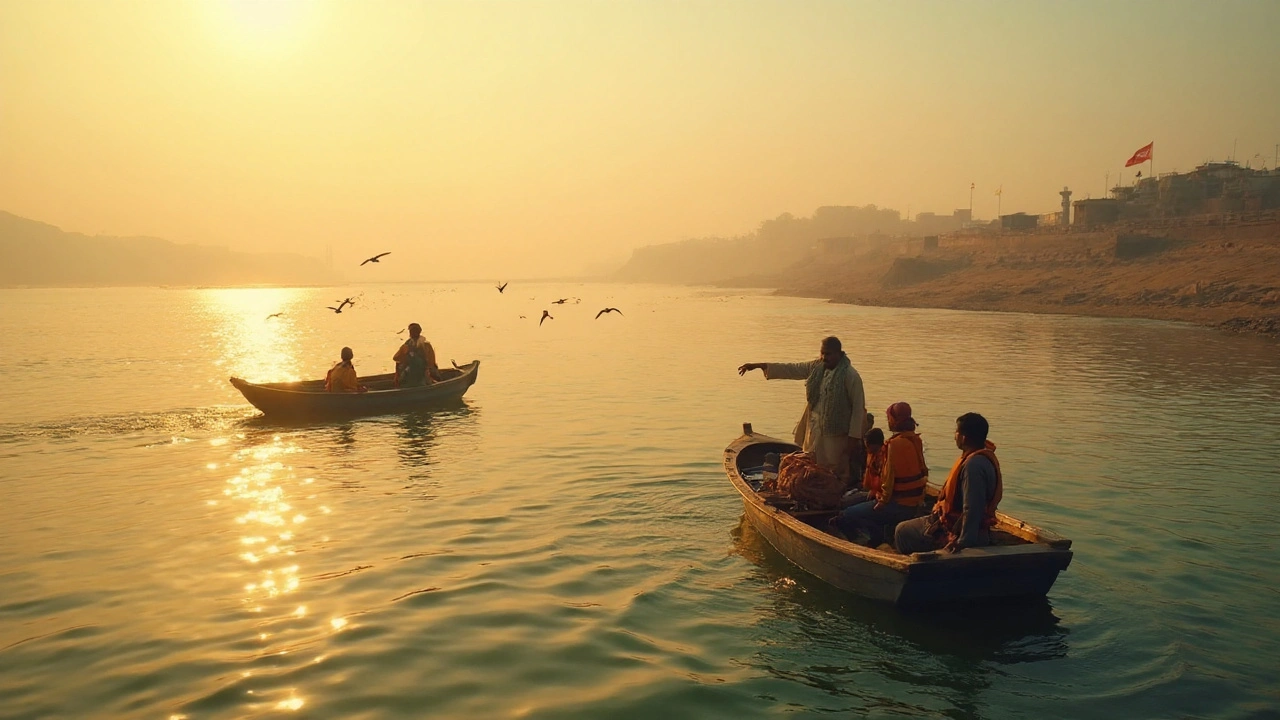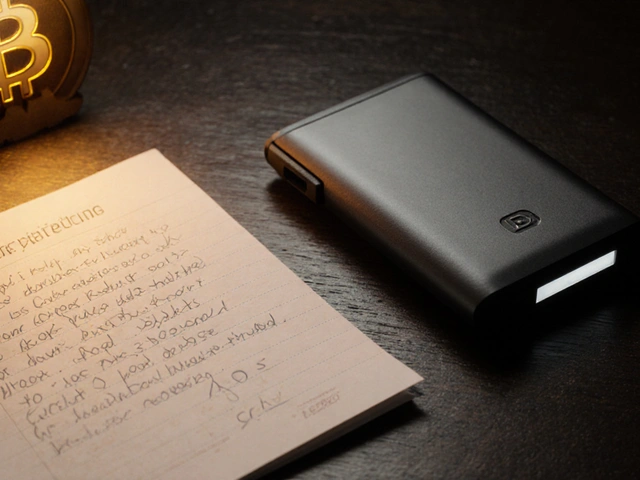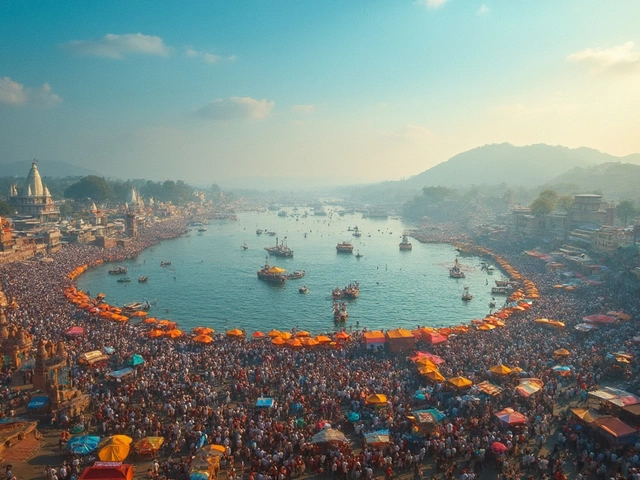Which River Is in Prayagraj? Ganga, Yamuna and the Triveni Sangam Explained
If you want the straight answer to which river is in Prayagraj, here it is: two major rivers meet there-the Ganga (Ganges) and the Yamuna-and a third, the Saraswati, is believed by many to flow underground. Their meeting point is called the Triveni Sangam. If you searched for Prayagraj river hoping for a quick, reliable answer plus a bit of context you can actually use, you’re in the right place. I’ll give you the one-line TL;DR, then walk you through how to see the Sangam, why it matters, and the little details that make visiting smooth and safe.
- TL;DR / Key takeaways: Prayagraj sits at the confluence of the Ganga and Yamuna; the Saraswati is believed to join invisibly.
- The confluence is called Triveni Sangam. You can see the two water colors meet from a boat.
- Best time to visit: dawn in the cool season (Nov-Feb); crowds peak during Magh Mela and during Kumbh years.
- It’s a major spiritual site: Kumbh Mela here draws tens of millions; UNESCO recognizes Kumbh as Intangible Cultural Heritage (2017).
- Practical tip: agree on boat price upfront, wear a life jacket, and avoid risky swims during monsoon (June-Sept).
The straight answer: which rivers flow in Prayagraj?
Prayagraj, in Uttar Pradesh, India, sits where the Ganga and Yamuna meet. Locals call the confluence the Triveni Sangam-“triveni” means “three streams,” because many believe the ancient Saraswati joins underground at this spot. Whether you come for faith, history, or sheer geography, this is the place where two big, very real rivers merge in full view.
From the riverside, you’ll notice a color contrast: the Ganga often looks a pale green or silty jade, while the Yamuna tends to be darker, with a blue-brown tone. Boatmen point out the visible line where the currents braid. On calm days, the line is clear; after heavy rain, it blurs as sediment mixes.
How the rivers approach the city matters to your mental map. The Yamuna sweeps in from the west, skirting the southern side of the historic Allahabad Fort. The Ganga flows in from the northwest. They meet in a wide, open reach known as the Sangam Nose, and the combined waters continue east as the Ganga toward Varanasi and beyond. If you like simple directions: Yamuna from your left, Ganga from your right, merged flow straight ahead.
People often ask, “So which one is the Prayagraj river?” The city doesn’t have its own separate river; it is defined by the meeting of the Ganga and the Yamuna. If you want one name on a postcard, say “the Ganga.” If you want the fuller truth, say “the Ganga and the Yamuna at the Triveni Sangam.” Both are correct in context.
There’s also the long-running question about the Saraswati. Ancient texts and local tradition place it here. Many pilgrims treat it as present. Geologists and archaeologists debate the historic flow of a Saraswati-like channel across northwest India. In the city itself, you won’t see a third surface river-only the faith and the rituals that honor it.
Why the Sangam matters: faith, history, and a living city
The Sangam is much more than a map point. It’s a spiritual anchor. For Hindus, bathing at the confluence is a powerful act of purification. The belief is simple and deep: where sacred waters meet, you cleanse the old and make room for the new. That’s why you see families, students, and elders lining up for a dip, whispering prayers, and setting small lamps afloat at dusk.
Kumbh Mela puts Prayagraj on a global stage. Every six years the city hosts an Ardh Kumbh; every twelve, the Maha Kumbh. The most recent Maha Kumbh here ran Jan-Feb 2025, with massive “shahi snan” bathing days. UNESCO listed Kumbh Mela as Intangible Cultural Heritage in 2017, which gives a sense of its cultural weight. Crowd numbers are hard to pin down on the nose, but the scale regularly reaches tens of millions across the full festival window, with peak single-day gatherings in the many millions.
History stacks up along this bend in the river. Emperor Akbar built the massive Allahabad Fort in the 16th century to command the confluence. The fort still watches the waters, a stone witness to centuries of trade, pilgrimage, and empire. The city’s former name, Allahabad, appeared on colonial maps and in records for generations. In 2018, the official name returned to Prayagraj, echoing the ancient “Prayag,” the place of sacrifice and meeting of rivers.
And Prayagraj isn’t a museum. It’s a living river city: morning aarti at the ghats, tea sellers balancing kettles, laundry strung in the sun, students heading to exams. If you stand at the Sangam at dawn, the whole place breathes-a mix of incense, silt, and that soft, cool light that makes even a practical traveler stop and just look. I live in Melbourne, but the first time I watched the pale Ganga fold into the darker Yamuna, I told Jasper I’d never seen two rivers keep their colors so clearly as they joined. It’s a simple moment that sticks.
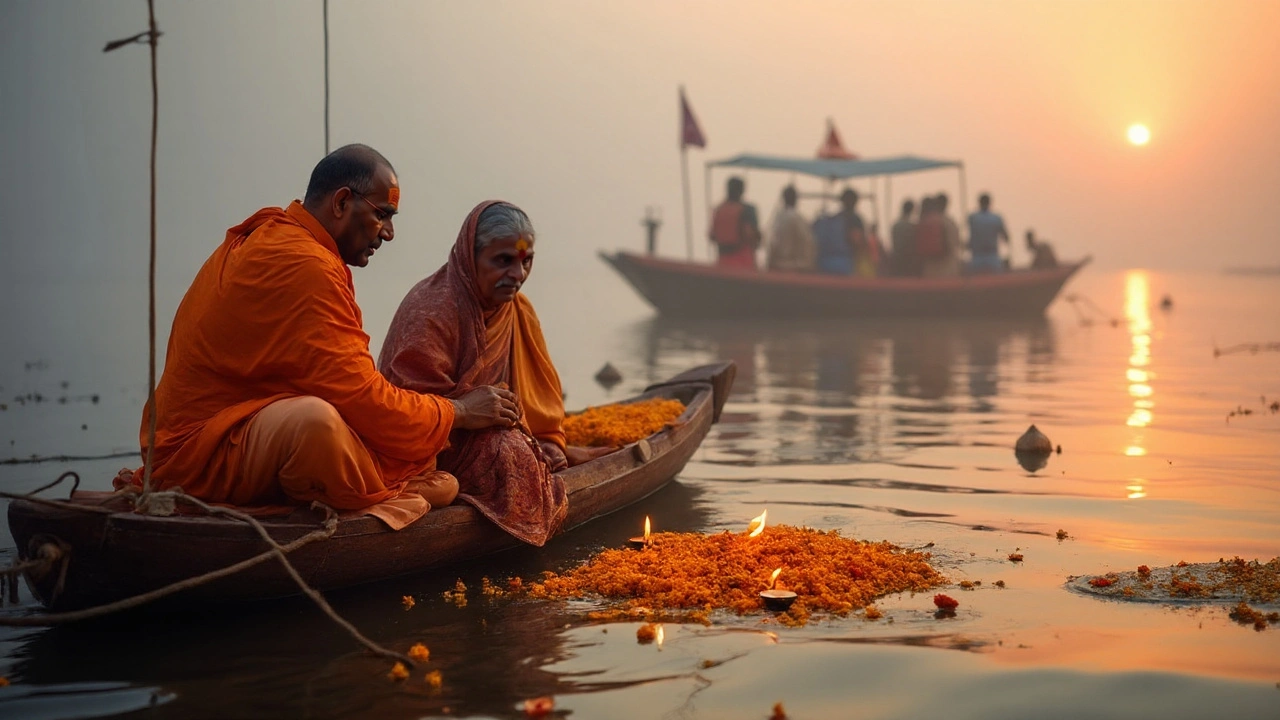
How to see the Sangam: step-by-step, safety, and the sweet spots
If you want a clean plan to actually see the confluence without stress, this is your playbook.
- Get to the riverfront. Head for the Sangam area, often called the Sangam Nose. Local e-rickshaws and taxis know it. Traffic can be dense during festivals, so expect drop-offs a short walk away.
- Pick your spot: shore or boat. From shore you’ll catch the scene: pujas, lamps, birds, and long lines of boats. A small rowboat gets you right to the confluence line. Ask to go to the precise meeting point; boatmen know where the currents draw a visible seam.
- Agree on the fare upfront. Ask for the full price (to the Sangam and back), whether it includes a short stop for rituals, and whether a life jacket is provided. It’s normal and fair to negotiate. Pay in cash.
- Wear a life jacket. No exception. Even if you’re a strong swimmer, currents can surprise you, especially in monsoon season (June-September). If a boat doesn’t carry jackets, wait for one that does.
- Choose your time of day. Dawn is calm, cooler, and beautiful for photos. Late afternoon gives you warm light. Midday is harsher but less crowded on non-festival days. During Magh Mela (typically Jan-Feb), the whole riverfront feels like a city in itself, with camps and rituals running dawn to night.
- Respect the rituals. If you step into the water, watch where you place your feet. Don’t block people doing puja. If you’re offered a puja “package,” ask the price and exactly what’s included before you say yes.
- Skip risky swims. The confluence is not a casual swimming hole. Depth changes quickly. Currents converge and can spin you. Stick to shallow, supervised dips near the ghats.
- Mind your stuff. Keep valuables minimal and sealed in a dry bag. A simple sling pouch under your shirt is better than a backpack in a boat. Water-resistant sandals beat flip-flops that slip off.
- Hydrate and cover up. Sun on the water doubles the glare. A hat, light scarf, and sunscreen earn their keep. Safe bottled water is easy to find-carry one.
What to bring if you plan to step into the water or ride a boat?
- Quick-dry clothes or a spare set in a zip-lock.
- Small towel; biodegradable soap if you must, but avoid plastics and heavy lotions.
- Sealed waterproof pouch for phone and cash.
- Hand sanitizer; basic band-aids.
- Light snacks (nuts, fruit) if you’re staying long; carry your wrappers back.
Pitfalls to avoid:
- Accepting vague offers-always confirm price and duration.
- Stepping onto overcrowded boats-wait for a safer one.
- Wading deep near the current seam-you can lose footing fast.
- Underestimating winter mornings-northern India can be cold at dawn; layer up.
When to go:
- Cool, clear months: November to February gives you clearer skies and gentler sun. Magh Mela (around Jan-Feb) adds scale and color.
- Hot, dry months: March to May are hotter; go at dawn or dusk.
- Monsoon: June to September brings high, fast water and turbid flow. Boats may limit routes or pause during heavy rain.
Photo tip: if you want the classic two-color shot, tell the boatman you want to hover along the meeting line, then shoot at a slight angle so the seam runs diagonally across the frame. It reads better than a straight horizontal split.
River facts and quick comparisons
Here’s a snapshot of the two visible rivers at Prayagraj, plus what people believe about the third.
| River | Also known as | Length (approx.) | Source | Typical color at Sangam | Flows past | Notes |
|---|---|---|---|---|---|---|
| Ganga (Ganges) | Ganga | ~2,525 km | Gangotri Glacier (Gaumukh), Uttarakhand | Pale green/silty jade | Rishikesh, Haridwar, Kanpur, Varanasi | Main stem continues east after the confluence; major cultural and economic lifeline. |
| Yamuna | Jamuna (older English), Yamuna | ~1,376 km | Yamunotri Glacier, Uttarakhand | Darker blue-brown | Delhi, Mathura, Agra | Joins the Ganga at Prayagraj; distinct color visible in calm conditions. |
| Saraswati | - | - | - | Not visible | - | Revered in texts; many believe it flows underground to meet the other two rivers here. |
Why the colors differ: sediment load, flow speed, and the riverbed. The Ganga, coming down from the Himalaya and across plains, often carries fine silt that gives it a soft green-gray hue. The Yamuna’s basin and upstream inputs can make it appear darker. After heavy rain, both turn browner as they carry more silt.
Bridges and vantage points: large bridges span the rivers upstream and downstream, giving long views, but the most intimate view is from a small rowboat near the Sangam. If you’d rather stay on land, ghats near the confluence offer steady footings, especially useful for families and older travelers.
Festivals and cycles: Prayagraj’s annual Magh Mela brings set bathing dates in the cool season. The Ardh Kumbh is every six years here; the Maha Kumbh every twelve (2013, then 2025). During those months, the city builds a temporary tent city with roads, lights, sanitation, and medical camps. Local administration and national agencies coordinate to manage crowd flows, river safety, and public health. If you plan a visit in a Kumbh year, book your stay months ahead.
Who says so? For history, the Archaeological Survey of India documents the fort and early city layers. For water levels and flows, the Central Water Commission monitors gauges. For the cultural listing, UNESCO’s 2017 Intangible Cultural Heritage roster includes Kumbh Mela. These are the backbone sources that ground what you see on the water in hard data and record.
Quick decision helper:
- If you want quiet reflection and soft light: go at dawn in November-February.
- If you want energy and scale: plan for Magh Mela days or a Kumbh year (crowded, but unforgettable).
- If you’re bringing kids or elders: pick a weekday morning in the cool season; stay near the ghats; short boat ride only.
- If you care most about that two-color seam: avoid heavy-rain weeks; ask the boatman to hug the meeting line for a few minutes.
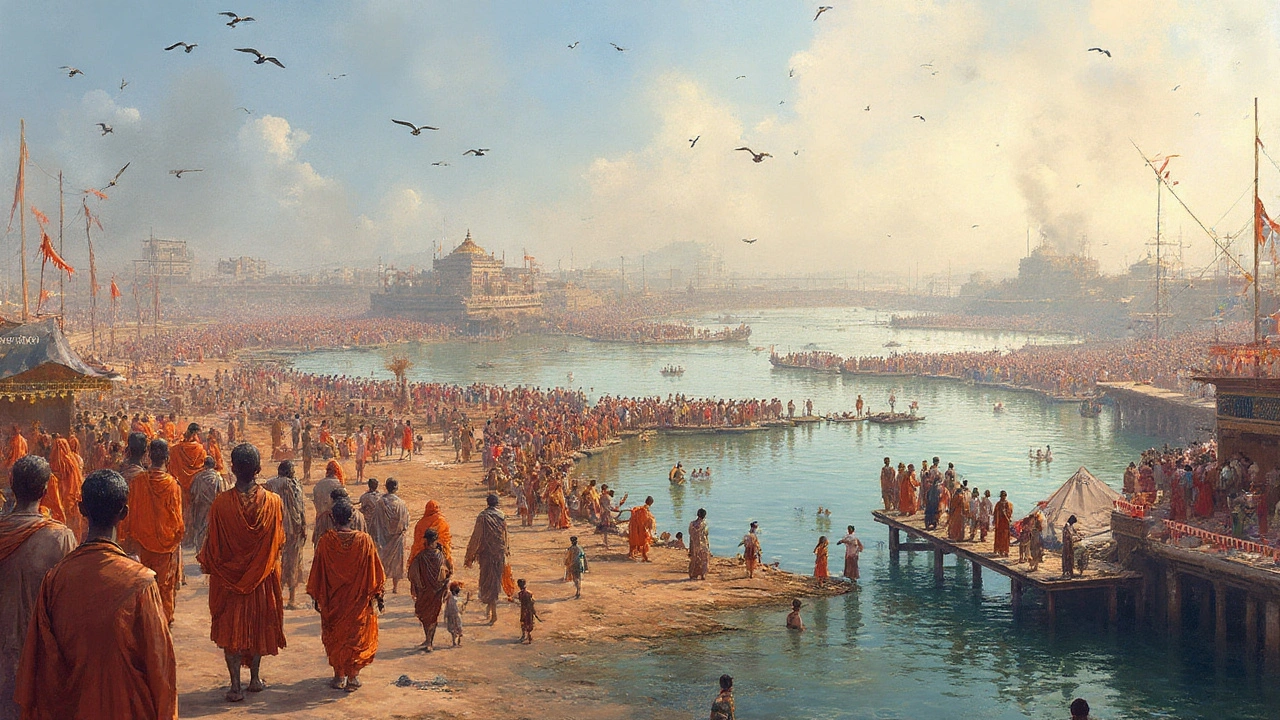
Mini‑FAQ and your next steps
Here are the answers to the follow-up questions people ask most the moment they hear “Which river is in Prayagraj?”
- Is Saraswati actually there? You won’t see a third surface river at the confluence. Many pilgrims believe Saraswati joins underground. Scholars debate an ancient Saraswati-like channel in northwest India; that scholarly discussion doesn’t change what visitors see at Prayagraj: two visible rivers, one believed to be invisible.
- Can you swim at the Sangam? Not wise. Currents meet and form eddies. Stick to shallow dips near supervised ghats and always follow the directions of local authorities.
- Why do the waters look like two different colors? Different sediment types and concentrations. On calmer days with moderate flow, you’ll see a distinct line. During monsoon or on windy days, the mix happens faster and the line fades.
- What’s the best time to visit? Dawn in the cool season (Nov-Feb). If you want the festival atmosphere, plan around Magh Mela bathing days. In 2025, Prayagraj hosted the Maha Kumbh in Jan-Feb-outside that window, you’ll find lighter crowds.
- Where do the rivers go after the confluence? They merge and continue east as the Ganga across the plains, past cities like Varanasi, toward the Ganges-Brahmaputra delta.
- Is the city called Allahabad or Prayagraj now? Prayagraj is the official name since 2018. You’ll still hear “Allahabad” from older signage, people, and stories.
- Are there life jackets on boats? They should be. Ask before boarding. If none are available, take another boat. Err on the safe side, especially with kids.
- How much time do I need? A focused two-hour window is enough for a boat ride and quiet time on the ghat. During festivals, add buffer for crowds, lines, and traffic.
Next steps based on what you want to get done:
- Pilgrim or spiritual traveler: Check the bathing calendar for Magh Mela or local auspicious days. Bring modest clothing that dries fast. If you plan a puja, agree on the ritual steps and offering price upfront.
- Photographer: Scout the ghats the evening before. For dawn, arrive 30-45 minutes early. Carry a microfiber cloth (river spray) and a cheap rain cover for your camera. Ask before photographing people doing puja.
- History buff: Read up on Akbar’s Allahabad Fort and the city’s role at the river trade crossroads. A local guide can point out layers you’d miss solo.
- Family traveler: Keep the boat ride short (20-30 minutes), pack snacks, and go early. Choose boats with canopy shade and jackets in kids’ sizes.
- Budget traveler: Share a larger boat to split costs and still reach the confluence. Confirm the shared trip includes a pause right at the seam of the rivers.
Troubleshooting if things go sideways:
- Boatmen keep quoting high prices: Smile, thank them, and ask two more operators. Rates shift with season and crowd size. You’ll find a middle line fast.
- Water looks muddy and one-color: Recent rain likely. Focus on the larger scene-prayers, birds, fort views-and try again at dawn the next day.
- Too crowded to move during a festival day: Step back from the busiest ghat, use side approaches, or shift to a weekday dawn slot. Drink water, don’t push, and follow police directions.
- Weather turns windy: Skip the boat and settle on shore for a while. Wind and chop can make small boats uncomfortable.
If your only question was “Which river is in Prayagraj?” you now have the crisp answer and the context to make it real. Two mighty rivers-the Ganga and the Yamuna-meet here, with the Saraswati honored in belief. Whether you’re planning a careful dawn visit or you land in the middle of a festival surge, the Sangam rewards patience, a life jacket, and a bit of curiosity. Even my cat Whiskers, who usually saves her attention for bird videos, would probably stare at those converging currents. Some things are just that captivating.
